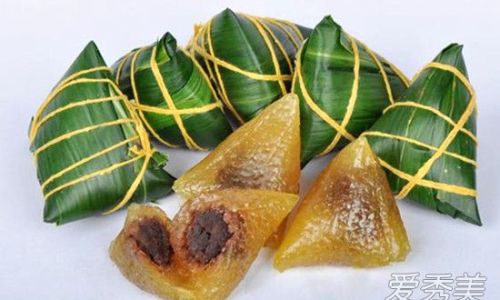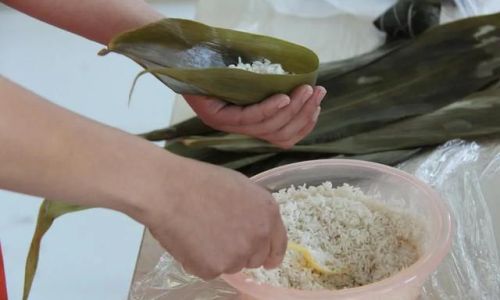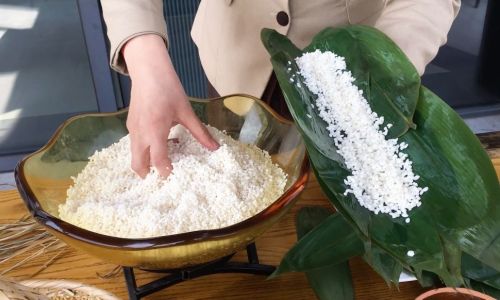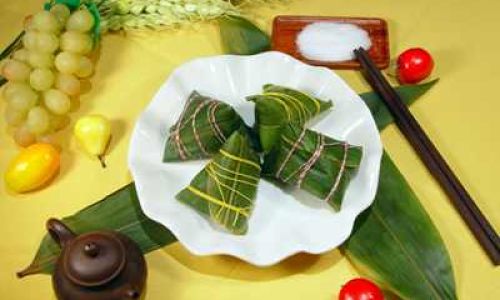Introduction
Zongzi, a beloved traditional Chinese dish, is a culinary masterpiece wrapped in bamboo or reed leaves. These pyramid-shaped or triangular parcels, typically enjoyed during the Dragon Boat Festival, are filled with glutinous rice and an array of savory or sweet ingredients. While the filling and wrapping techniques often steal the spotlight, the foundation of a perfect zongzi lies in the preparation of its rice. Achieving the ideal texture—sticky yet tender, flavorful without being mushy—requires precision, patience, and an understanding of the science behind glutinous rice. This article delves into the intricate process of preparing rice for zongzi, from selection to seasoning, ensuring your next batch is a triumph of tradition and taste.

The Significance of Glutinous Rice in Zongzi
Glutinous rice, also known as sticky rice or nuo mi in Chinese, is the soul of zongzi. Unlike long-grain rice, which remains separate when cooked, glutinous rice contains a higher proportion of amylopectin, a starch that absorbs water and swells during cooking, creating a characteristic sticky texture. This stickiness is crucial for zongzi, as it binds the ingredients together and adheres to the leaves, creating a cohesive, satisfying bite.
1 Choosing the Right Variety
Selecting high-quality glutinous rice is the first step toward zongzi success. Look for plump, translucent grains with minimal broken pieces. Thai glutinous rice, Chinese “sweet rice,” or Japanese mochi gome are excellent choices, each offering a subtle variation in stickiness and flavor. Avoid aged rice, as it may lose moisture and become brittle, resulting in a less cohesive texture.
2 The Role of Starch in Texture Development
The amylopectin in glutinous rice is key to its adhesive properties. When cooked, these starches gelatinize, creating a gel-like matrix that holds the rice together. Proper preparation ensures this gelatinization occurs evenly, preventing undercooked hard spots or overcooked mushiness.
The Soaking Process: Hydration for Perfect Texture
Soaking glutinous rice is a non-negotiable step in zongzi preparation. This process hydrates the grains, jump-starting the gelatinization process and ensuring even cooking.
1 Why Soak?
- Hydration: Dry rice grains are dehydrated and rigid. Soaking reintroduces moisture, softening the outer bran layer and allowing water to penetrate the endosperm.
- Even Cooking: Soaked rice cooks more uniformly, reducing the risk of uneven texture.
- Stickiness: Hydrated rice grains swell, increasing surface area and enhancing stickiness when cooked.
2 Optimal Soaking Time and Temperature
- Time: Soak for 6–12 hours, or overnight. This allows the rice to absorb approximately 30% of its weight in water, achieving optimal hydration.
- Temperature: Use cool water (around 68°F/20°C) to prevent premature fermentation or bacterial growth. Avoid hot water, which can over-soften the grains.
3 Testing Readiness
A well-soaked grain should break easily when pressed between fingertips but retain a slight firmness. Over-soaked rice may become mushy, while under-soaked rice will remain chalky and hard after cooking.
Seasoning the Rice: Flavor Infusion Techniques
Seasoning transforms plain glutinous rice into a flavorful canvas for zongzi fillings. The method varies by region and preference, but the goal remains consistent: distributing flavor evenly without compromising texture.

1 Traditional Seasoning Agents
- Soy Sauce: Light soy sauce adds saltiness and umami. Dark soy sauce contributes color and depth.
- Salt: Enhances natural flavors and acts as a preservative.
- Sugar: Balances saltiness in savory zongzi or highlights sweetness in dessert varieties.
- Spices: Star anise, cinnamon, Sichuan pepper, or five-spice powder introduce aromatic complexity.
- Fat: Lard, sesame oil, or peanut oil add richness and prevent stickiness.
2 Seasoning Methods
- Dry Rub: Mix rice with salt, sugar, and spices before adding liquids. This ensures even distribution.
- Liquid Marinade: Combine soy sauce, oil, and spices, then toss with rice. The liquid aids absorption but requires careful ratios to avoid sogginess.
- Layering: Some cooks season rice in batches, alternating with fillings during wrapping to create flavor gradients.
3 Regional Variations
- Southern China: Dark soy sauce and five-spice powder dominate, yielding reddish-brown rice with a robust aroma.
- Northern China: Lighter seasonings like salt and sesame oil are common, allowing fillings like red bean paste or jujubes to shine.
- Southeast Asia: Coconut milk or pandan extract may be added for tropical flair.
Cooking Methods: Steaming vs. Boiling
The cooking method significantly impacts texture and flavor. Both steaming and boiling are valid approaches, each with pros and cons.
1 Steaming
- Process: Place seasoned rice in a steamer basket over boiling water. Cover and cook until tender (25–40 minutes, depending on quantity).
- Advantages:
- Preserves Stickiness: Steaming minimizes water absorption, maintaining the rice’s adhesive properties.
- Enhanced Flavor: Aromatics like pandan leaves or ginger can be placed beneath the basket to infuse the rice.
- Disadvantages: Requires careful monitoring to prevent drying out.
2 Boiling
- Process: Submerge wrapped zongzi in boiling water and cook until tender (1.5–3 hours).
- Advantages:
- Even Cooking: Water penetrates the leaves, gently cooking the rice from all sides.
- Soft Texture: Ideal for fillings like pork or mushrooms, which benefit from prolonged cooking.
- Disadvantages: Risk of over-soaking rice, leading to mushiness.
3 Hybrid Technique: Pre-Cooking Rice
Some cooks partially cook rice before wrapping, reducing final cooking time. This method ensures even hydration but requires precision to avoid overcooking.
Achieving Perfect Texture: Tips and Tricks
Mastering zongzi rice texture is an art. Here’s how to troubleshoot common issues:

1 Preventing Mushiness
- Soak Properly: Avoid over-soaking, which over-hydrates grains.
- Control Cooking Time: Steaming reduces water exposure; boiling requires shorter durations.
- Add Fat: A teaspoon of oil per cup of rice coats grains, reducing stickiness.
2 Avoiding Undercooked Rice
- Ensure Even Soaking: Stir rice occasionally during soaking to prevent clumping.
- Check Doneness: Taste a grain; it should be tender with no crunch.
- Adjust Heat: Boiling zongzi? Maintain a gentle simmer to prevent uneven cooking.
3 Enhancing Stickiness
- Use Fresh Rice: Aged rice loses moisture and stickiness.
- Add Alkaline Ingredients: A pinch of baking soda or lye water (kansui) during soaking enhances gelatinization, yielding a softer, springier texture.
Regional and Cultural Adaptations
Zongzi’s diversity is a testament to China’s culinary geography. Rice preparation varies widely, reflecting local ingredients and traditions.
1 Southern China (Cantonese-Style)
- Seasoning: Dark soy sauce, five-spice powder, and lard.
- Texture: Soft, with a glossy sheen from soy sauce.
- Technique: Rice is often pre-mixed with marinated pork or salted egg yolk.
2 Northern China (Beijing-Style)
- Seasoning: Light soy sauce, sesame oil, and occasionally red bean paste.
- Texture: Drier, with distinct grain separation.
- Technique: Rice is layered with jujubes or chestnuts during wrapping.
3 Hakka and Minnan Varieties
- Alkaline Rice: Soaked with lye water for a golden hue and chewy texture.
- Fillings: Paired with ingredients like fermented bean paste or dried shrimp.
Storage and Reheating: Preserving Quality
Proper storage ensures zongzi remains fresh and flavorful.

1 Refrigeration
- Method: Wrap cooked zongzi in plastic or place in airtight containers.
- Shelf Life: 3–5 days.
- Reheating: Steam for 10–15 minutes or microwave with a damp paper towel.
2 Freezing
- Method: Freeze individually wrapped zongzi to prevent sticking.
- Shelf Life: Up to 3 months.
- Reheating: Thaw overnight in the refrigerator, then steam or boil.
Common Mistakes and How to Avoid Them
Even seasoned cooks stumble. Here’s how to sidestep pitfalls:
1 Over-Soaking Rice
- Symptom: Mushy, broken grains.
- Solution: Reduce soaking time; test readiness frequently.
2 Insufficient Seasoning
- Symptom: Bland, one-dimensional flavor.
- Solution: Taste-test seasoned rice before wrapping; adjust salt/soy sauce ratios.
3 Overstuffing Zongzi
- Symptom: Uneven cooking, burst leaves.
- Solution: Leave 1–2 inches of space around fillings for rice expansion.
Innovations and Modern Adaptations
While tradition reigns supreme, contemporary cooks experiment with healthier or creative twists.
1 Gluten-Free Alternatives
Substitute glutinous rice with quinoa or cauliflower rice for a lighter texture.

2 Vegan and Low-Sodium Options
Use coconut aminos instead of soy sauce, and mushrooms or tofu for umami.
3 Fusion Flavors
Incorporate international ingredients like curry powder, sun-dried tomatoes, or goat cheese for unexpected zest.
Conclusion: The Heart of Zongzi Lies in the Rice
Preparing rice for zongzi is a meditative act, blending science, tradition, and intuition. Each step—from soaking to seasoning—contributes to the dish’s soul, transforming simple grains into a vehicle for culture and memory. Whether you adhere to time-honored methods or experiment with modern twists, mastering the rice ensures your zongzi will be a cherished tribute to this ancient culinary art. So, the next time you tie those bamboo leaves, remember: the journey to zongzi perfection begins with the humble grain.






0 comments